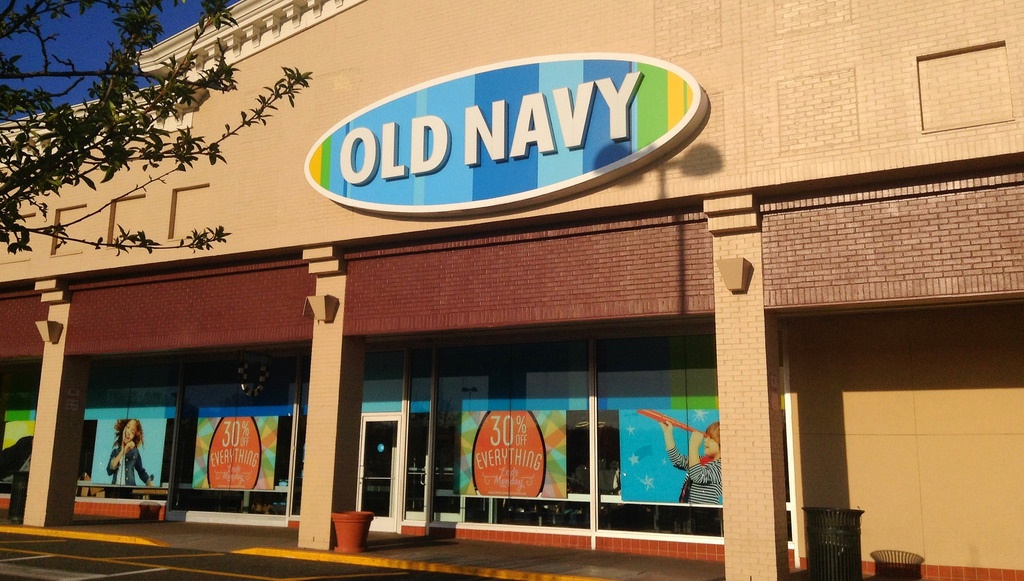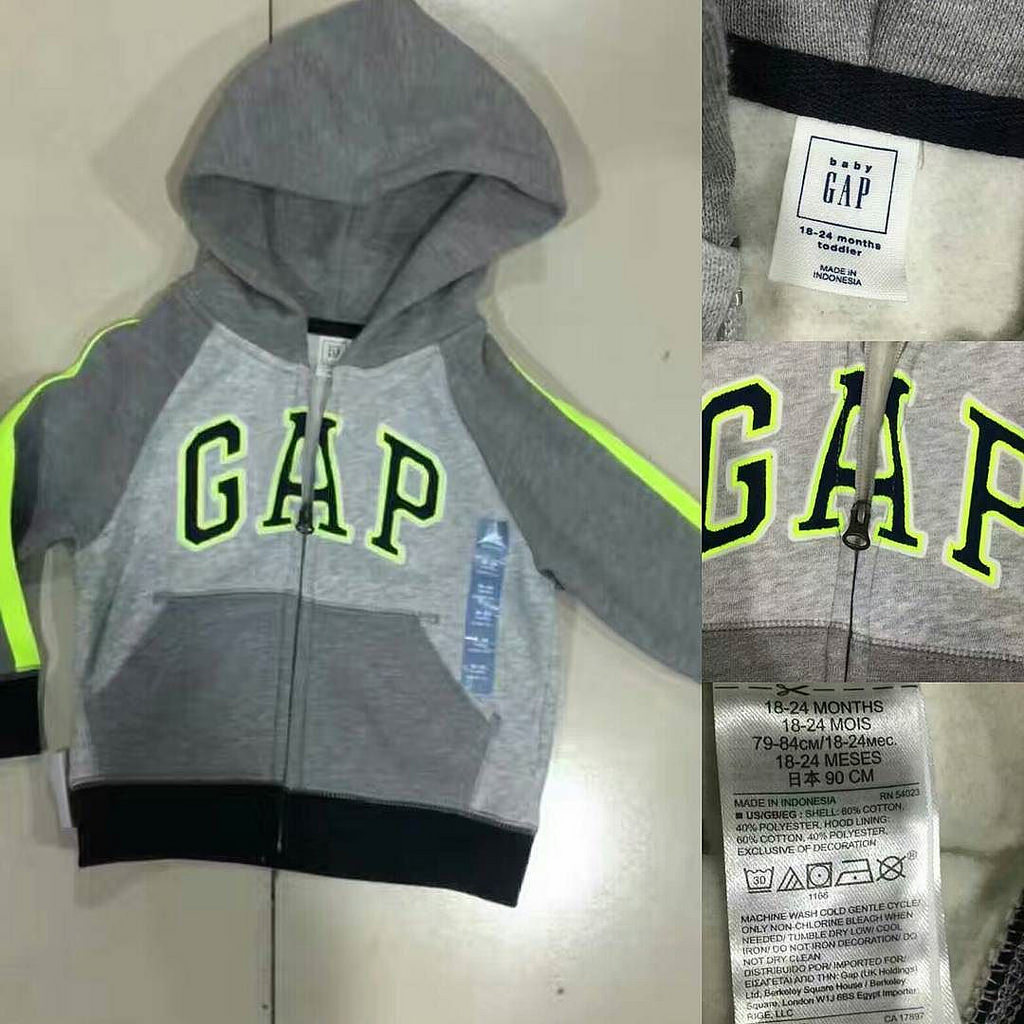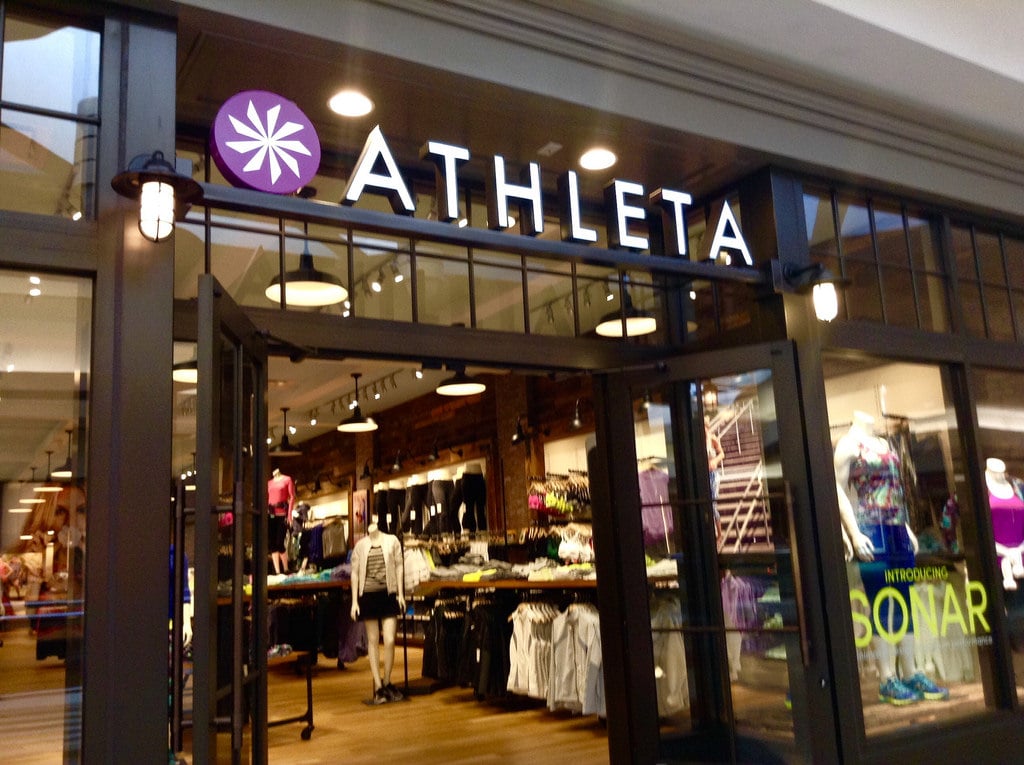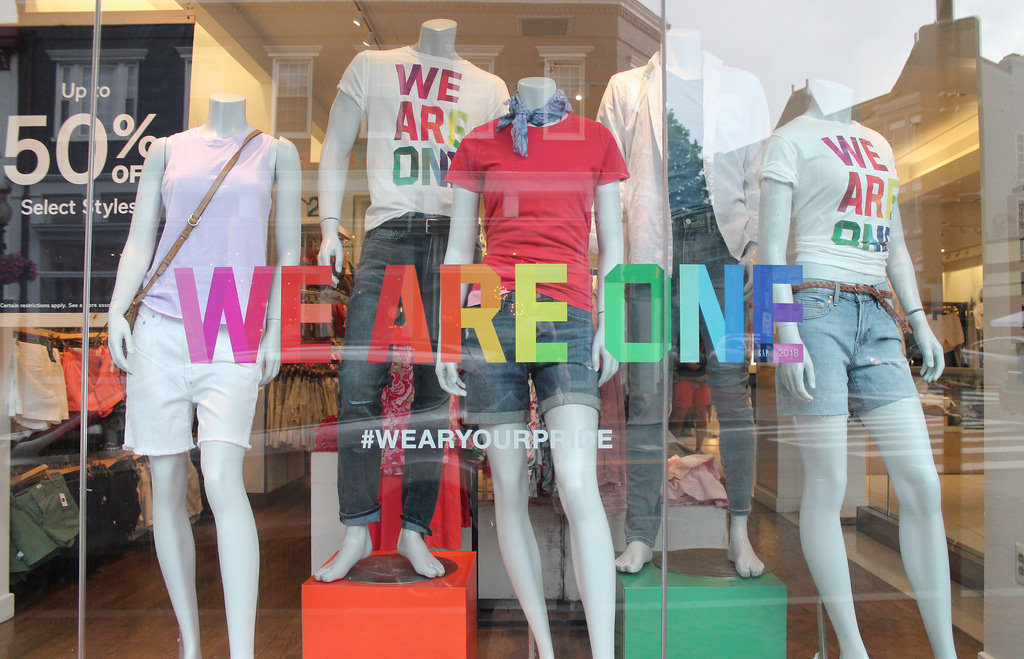It’s been a tough half decade for the GAP and things haven’t gotten better lately. JP Morgan recently downgraded them, and they have lowered earnings per share estimates by 12%. Owing to “operational issues” and inventory imbalance, the GAP brand (not to be confused with the Gap Band who keep on funking) has lost cultural cache and mindshare as its cookie-cutter stylings clash with current trends.
It wasn’t always this way. In the same way that Rita Moreno is an undisputed American treasure and Adam Rippon is America’s reigning sweetheart, the GAP used to be America’s clothing brand. Their ubiquitous hoodies, chinos, and button-ups were part of the standard issue uniform of American high schoolers and college students, and they came as close as anybody to a pre-internet viral video sensation with that Jumpin’ Jive commercial.
What happened between the Jumpin’ Jive era and now?
Well, mind the GAP as we put in some manufacturing and retail market research to understand the distance between GAP brand’s styles and current trends, its role in the GAP Inc. as Old Navy continues to rise, and potential paths forward as it meets new challenges and competitors.
The Growing GAP Between GAP Inc’s Brands
Ok, first thing’s first. It’s gonna get really confusing really quickly if we don’t separate GAP brand from GAP Inc. GAP brand is the store, GAP Inc is the corporation that holds it. Confusing, right? Yeah, we’ll get to that later.
Anyway, let’s try this: Recently departed GAP CEO Jeff Kirwan was in charge of the GAP brand, not to be confused with GAP Inc, which owns GAP, Old Navy, Athleta, and Banana Republic, and is led by Art Peck. GAP brand accounts for roughly 25% of GAP Inc’s total sales.
And that 25% is not enough. Kirwan left the job in February, four years into the gig, where he had been charged with reinventing the brand and streamlining its operations. It did not go very well, with Kirwan achieving sales improvements once in his four-year run.
GAP Inc CEO Art Peck concedes the company’s recent past has not been optimal, “We have not achieved the operational excellence and accelerated profit growth that we know is possible at GAP brand.”
The company’s namesake, flagship brand is the one most hurting corporate’s bottom line. Younger sibling Old Navy sure is doing its part, however. It makes up half the company’s total sales and 70% of its profits. Yeah, go ahead, read that again; it bears repeating.
But with its 5% same-store sales decline this year on top of 1% last year, the GAP’s fall has eclipsed Old Navy and Athleta’s rise.

This is why GAP has closed 200 stores while Old Navy has simultaneously opened 270. It’s like the first-born child has squandered the family’s good name while their younger sibling rises to the occasion—this is some Game of Thrones Targaryen stuff here.
The Devil is in the Discount
Like many a retailer, in order to stay afloat, GAP has struck a bargain pricing bargain with the devil. They hit a seven-year high in promotions and sales in February and March, with sales regularly reaching up to 70% off.
This discounting has two primary purposes. First, obviously, they hope to lure digital and foot traffic, drawing consumers with the promise of relative affordability. Second, and more indicative of their current issues, the discounts allow GAP to get rid of imbalanced, off-trend, and unwanted inventory.
With their clothing’s style and quality nearly indistinguishable from its downstream (and more affordable) sister store Old Navy, and the normcore moment long behind us, consumers are unwilling to pay full price for GAP’s underwhelming inventory that lacks an identity.
The other GAP Inc stores have unique identities and target markets. Affordable, trendy and whimsical? Old Navy. The place you go to buy business casual for your first grown up job? Banana Republic. Athleisure apparel that won’t break the bank like Lululemon? Athleta.
There is simply no similar market or identity for GAP brand.
A GAP in Taste
How did they end up here?
Some of GAP’s issues are logistical. First, there is the supply chain issue. With the majority of their clothes sourced and produced overseas, tariffs and transportation costs have taken their toll. Throw in increased labor costs amidst a rapidly-rising minimum wage, and we can see how the turnaround can be tough.
And yet, to be fair, every retailer is operating under these same conditions (though some are ahead of the game on supply chain). And many of them have turned around their fortunes, either through aggressive reboots or through soft maneuvers to assert relevancy.
Thus, it’s not just the business end that is hurting GAP’s traffic and sales numbers. Look, GAP was great for the twilight of the age of conformity—a bygone era of the not-too-distant-past in which consumers wanted to fit in, not stand out.
These days, high school and college kids are wearing their identities on their sleeves, literally. Clothing and fashion are no longer a way to show you belong, but rather to assert your own sense of belonging. Unique pieces pulled from a rummage bin are far more stylish than whatever pullover hoodie GAP is selling in every urban area in the country.

GAP’s fashions no longer speak to consumers because, well, consumers stopped listening to GAP a while ago.
That’s why Neil Saunders, Managing Director of GlobalData retail observed recently, “A rising economic tide does float all retail boats, but it cannot float those with holes in them and, in our view, Gap is still a very leaky vessel.”
Competitors Old and New: A Broadening GAP
There are other ships in that economic tide, and they aren’t just the traditional GAP competitors from the Wet Seal era of mall dominance like Abercrombie & Fitch and American Eagle, who, let’s face it, are having their own troubles (when was the last time somebody went to Abercrombie for reasons other than abs ogling?).
No, the real competition is from emerging private label brands from Amazon and Target, who have a leg up on shipping logistics, and can be purchased in the same order as paper towels, a bathmat, party balloons, and a set of his and his night stands (your humble blogger’s last Amazon shopping cart). If consumers are in the market for nondescript, simple clothing, it is easier and cheaper to get it from one of these retail titans.
If they want luxury, they go to Nordstrom, if they want retro they go thrift storing. If they want affordable they go to Ross or the Rack or even Dollar General. But who is going to the GAP, and what are they looking for? Nobody knows.
Bridging the GAP
And yet, Peck remains optimistic: "Quarter-by-quarter, we expect performance to improve, and we believe the worst is behind us."
One way to turn things around is to make it easier to turn things out and around. Yes, that is an awful sentence and tautology, but it comes pretty close to describing their task—GAP is working to accelerate its supply chain and manufacturing process. In the past, designs took ten months to go from drawing board to store shelf. GAP would like that to be more like ten weeks.
In a move now favored by fast fashion houses like H&M and Zara, this faster turnaround would allow them to react quickly to changing trends. It would also give them greater inventory control, meaning that inventory would better match demand.
And when inventory better matches demand, there are little to no leftovers. Recall that leftovers are one major source of GAP’s excessive discounting and you understand how a butterfly flapping its wings just a little faster overseas can potentially change GAP’s fortunes domestically.

It seems that deemphasizing the GAP brand in favor of Old Navy and Athleta is on the agenda as well: “We will leverage our iconic brands and significant scale to deliver growth by shifting to where our customers are shopping – online, value and active,” Peck also said. There aren’t that many ways to interpret that sentence—they will emphasize value (Old Navy) and active (Athleta).
Retail Market Research and Strategic Consulting: Clearing the GAP
GAP needs to change its name. If it’s this tough on a blogger to keep the two entities (brand and Inc.) distinct, imagine how hard it is for consumers to separate the four GAP Inc brands in their head.
This isn’t just about semantics, it’s about how consumers understand the different brands under the GAP banner.
That’s where a strategic consulting firm can really help. By deploying multiple market research methodologies and advanced analytics, the GAP could better understand how its various banners resonate with consumers and asses the promises and pitfall of a hard reboot.
Trends are reliably cyclical but remain unpredictable. It is highly likely that, sometime down the road, the GAP will be back on trend as consumers retreat into a shared fashion identity once again. The question is, will the GAP still be around when that time comes?


